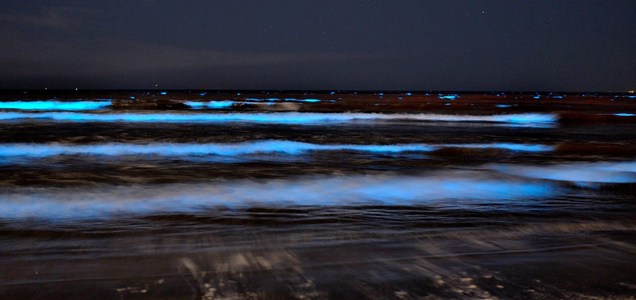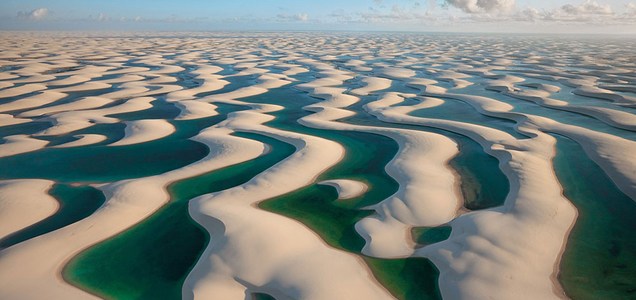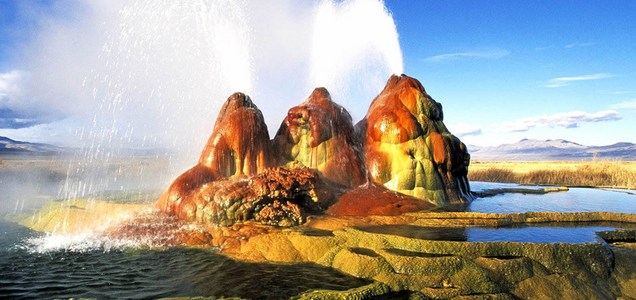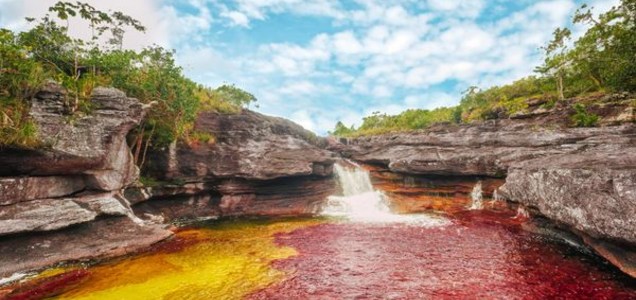In recent years, algae tend to focus on the nutritional aspect of proteins and their use as fuel, but the pigments of algae are equally important. In recent years, algae tend to focus on the nutritional aspect of proteins and their use as fuel, but the pigments of algae are equally important.
1. The red sea of Crimea (Ukraine)

First, I would like to introduce the tidal flats on the west coast of the Sea of Azov in Ukraine, which served as the model for the "Sea of Corruption" that appears in the Studio Ghibli film "Nausicaä of the Valley of the Wind". This is due to the multiplication of the microalgae Dunaliella , which gives the sea a reddish appearance.
2. Flamingos on Lake Nakuru (Kenya)

Kenya Connection: Lake Nakuru, Flamingos, A New Friend – TravelUpdate
Shadrack and I made an instant Kenya connection after I brazenly asked if I could join this local guide and his colleague in their Abercrombie and Kent Jeep back to Nairobi from the Maasai Mara. In other words, I hitchhiked in East Africa, something I hadn' t done but maybe once before and under far less exotic circumstances.
Read this article on travelupdate.com >
Lake Nakuru, located in Kenya in eastern Africa, has long been famous as a migratory destination for over one million Lesser Flamingos , and was designated as Kenya's first national park in 1968. In 1990, it was registered as a wetland under the Ramsar Convention, and has become an important area from the perspective of nature conservation. The Rift Valley Province, including Lake Nakuru, is dotted with lakes with a pH of about 9 to 10, and Spirulina grows as algae that can adapt to the special water environment of alkaline and high salinity. And by continuously ingesting carotenoid-containing spirulina, the lesser flamingos here have bright pink feathers.
3. Hot springs in Yellowstone National Park (USA)
Possibility of “hot spring algae” growing at high temperatures
Summer is almost over this year. While there were more rainy days than usual, on sunny days the temperature rose to 35°C or higher, making it difficult to spend comfortably outdoors in the summer. This time, I would like to introduce organisms that grow even in temperatures that far surpass those extremely hot days. The Grand Prismatic Hot Springs in Yellowstone National Park, USA
Read this article at modia.chitose-bio.com >4. Fantastic illumination by dinoflagellates (Australia, USA, Japan, etc.)
South Australian noctiluca
Glow-in-the-dark algae are growing on Tulka beach near Port Lincoln, South Australia.
Next, I would like to introduce a fantasy landscape created by the luminescent properties of dinoflagellates instead of pigments. This is also a landscape that was previously featured in Modia, but the fantastic scenery is created by the spread of noctiluca on the surface of the sea. This spectacle can be seen when dinoflagellates, which have a 24-hour circadian rhythm* and can only emit light at night, emit sky blue light at night when externally stimulated by waves .5. Lencois Maranhenses National Park (Brazil)
Flying Photographers and Watery Deserts
In addition to featuring research expeditions and remote, indigenous cultures, National Geographic also often devotes its pages to simply stunning landscapes. Granted, Lencois Maranhenses National Park is something of a geographic anomaly and worth a feature story; it's basically a watery desert in Brazil. But it's George Steinmetz's photography in this story that is most remarkable.
Read this article on npr.org >6. A fountain tower towering over the Black Rock Desert (USA)
Fly Geyser: One of Nevada's Little Surprises
A few years ago, a photographer friend showed me some pictures he'd taken of a place he called Fly Geyser. He said it was an amazing site that was located about two hours north of Reno on the edge of the Black Rock Desert.
Read this article at visitrenotahoe.com >It is said that the minerals of the hot spring were exposed to the air and deposited to reach the current height of over 3m. Algae adhered to the rock, giving the rock a fantastic color of red and green. Unfortunately, you can't get close to it because it's on private property, but you can see this view from the state road that runs beside it.
7. The world's most beautiful rainbow-colored river flowing in the hinterland (Colombia)
Cano Cristales
A unique biological wonder, Caño Cristales has been referred as the “river of five colors,” “the river that ran away from paradise,” and “the most beautiful river in the world.” For most of the year, Caño Cristales is indistinguishable from any other river: a bed of rocks covered in dull green mosses are visible below a cool, clear current.
Read this article at atlasobscura.com >The Cano Cristales is said to be the most beautiful river in the world, flowing through the Sierra de la Macarena natural park in the interior of Colombia. The rainbow colors of the river are only seen for a few weeks between September and November, when the dry and rainy seasons change. This is because, during the period when the water temperature rises as the water level drops, the algae and moss that spread over the riverbed grow all at once, creating such beautiful rainbow colors. The park used to be closed from the viewpoint of environmental protection, but now it is open and you can see the sights up close.
So far, we have introduced 7 of the many fantastic landscapes created by algae in the world.
There are still many spectacular views created by the “pigment” of algae and the “luminescence” of dinoflagellates, so if you are fascinated by the seven landscapes this time, why not try looking for other superb views?









